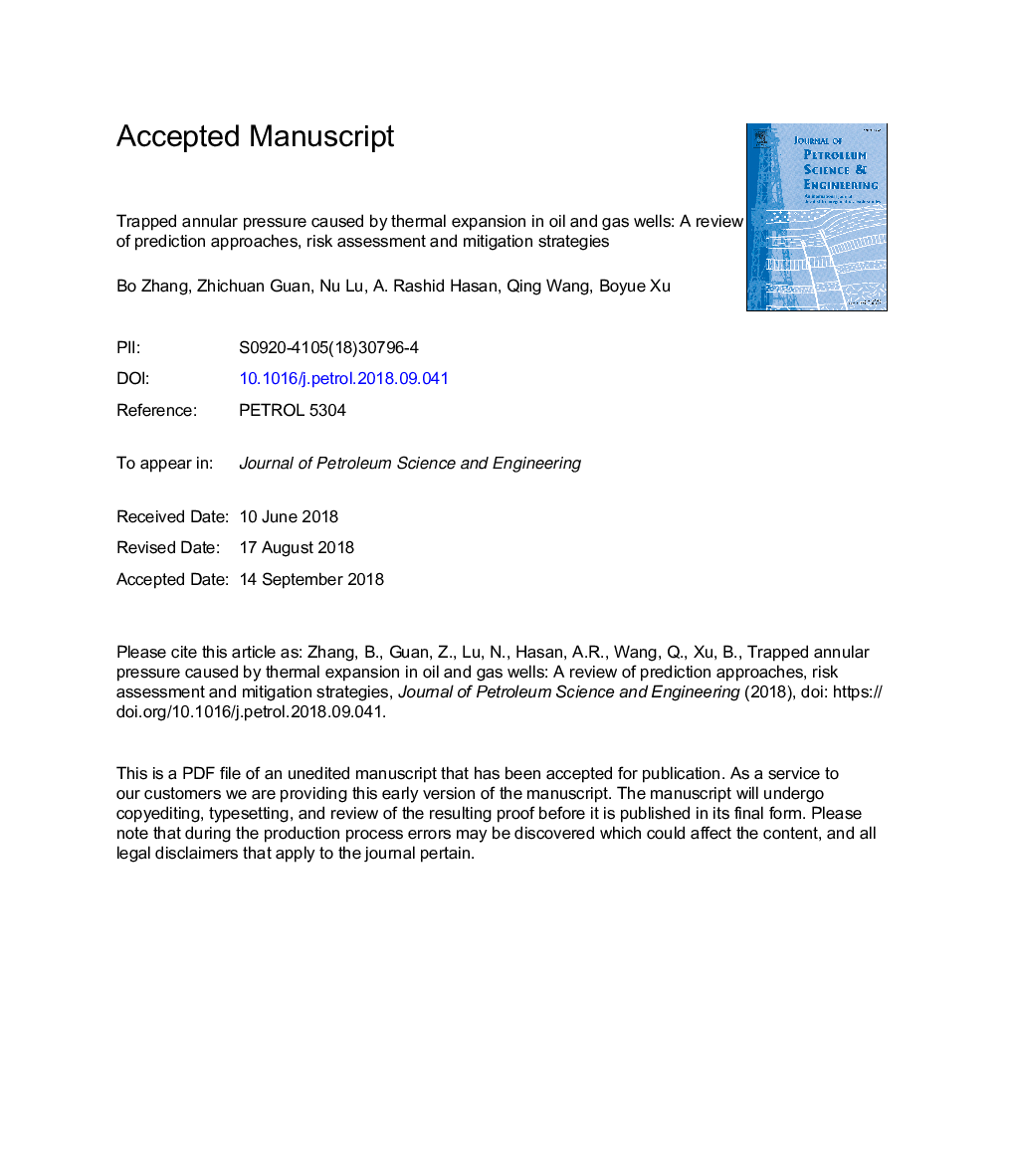| Article ID | Journal | Published Year | Pages | File Type |
|---|---|---|---|---|
| 10156373 | Journal of Petroleum Science and Engineering | 2019 | 26 Pages |
Abstract
Trapped annular pressure is caused by thermal expansion due to heat transfer and has become one of the serious challenges to well safety. In order to assess and mitigate this risk, this paper reviews the engineering background, prediction approaches, and mitigation measures for trapped annular pressure. It is well understood now that heat source and trapped space filled with liquid are the two basic preconditions for trapped annular pressure to occur. The accurate prediction is precondition of risk analysis and foundation for the mitigation design. The risk analysis determines the mitigation necessity and mitigation goal. To enhance prediction accuracy, temperature change, wellbore fluid properties, annulus and annular liquid volume change must be considered. Additionally, experiments are also needed to calibrate and validate theoretical models. The risks are mainly reflected in the reduction of casing reliability and integrity of wellbore seal. A number of mitigation approaches are available that vary in cost, effectiveness and operational difficulty. Encouragement is needed to develop novel measures to improve mitigation effect with low cost. The decision-making system are divided into four steps and can help to prevent potential risk of trapped annular pressure with low cost and high effectiveness.
Related Topics
Physical Sciences and Engineering
Earth and Planetary Sciences
Economic Geology
Authors
Bo Zhang, Zhichuan Guan, Nu Lu, A. Rashid Hasan, Qing Wang, Boyue Xu,
